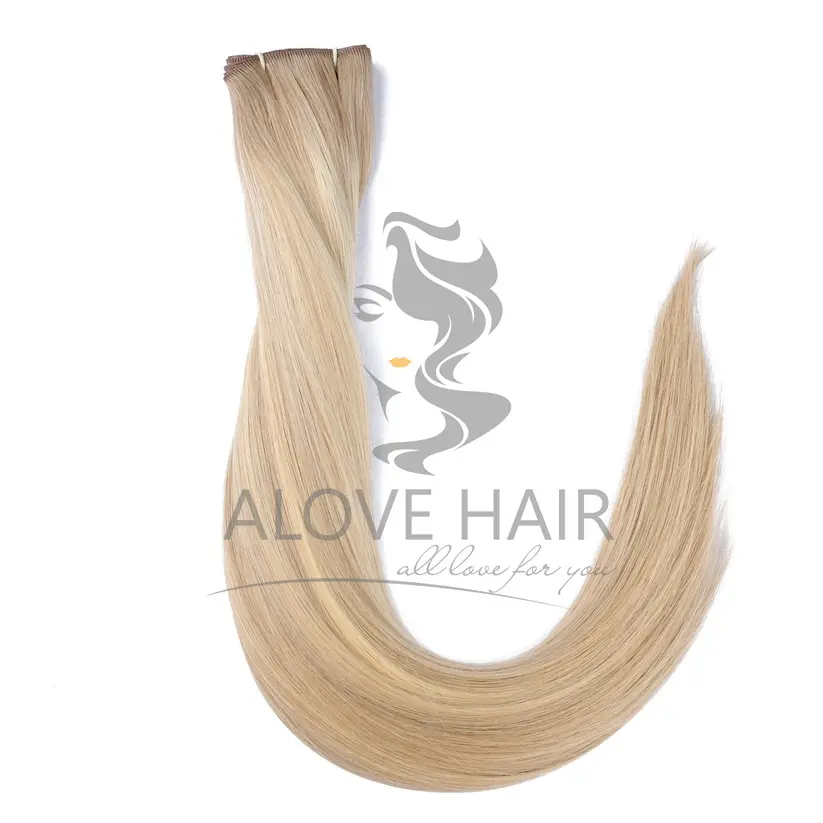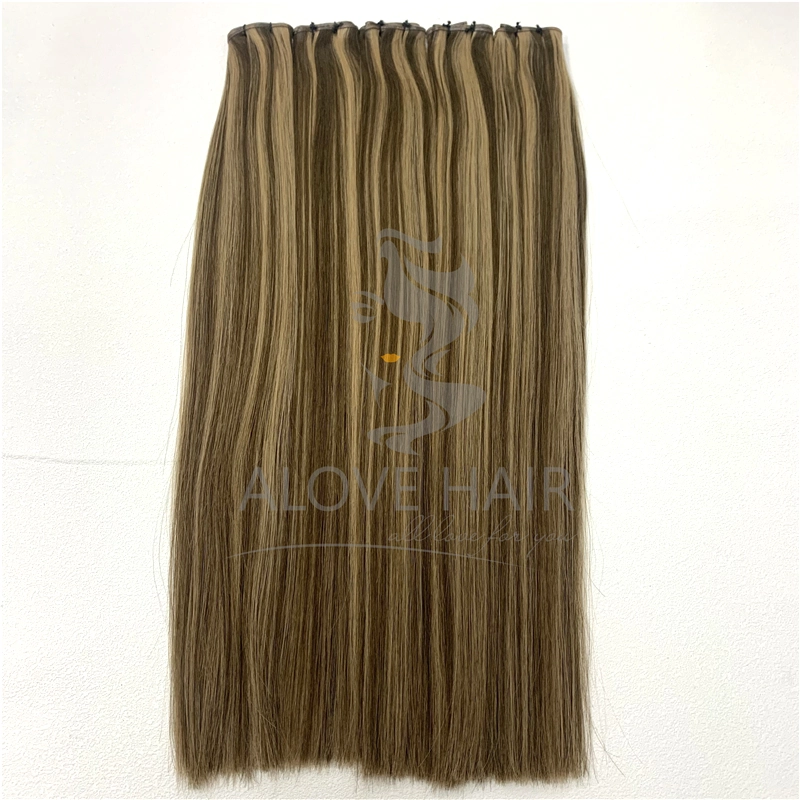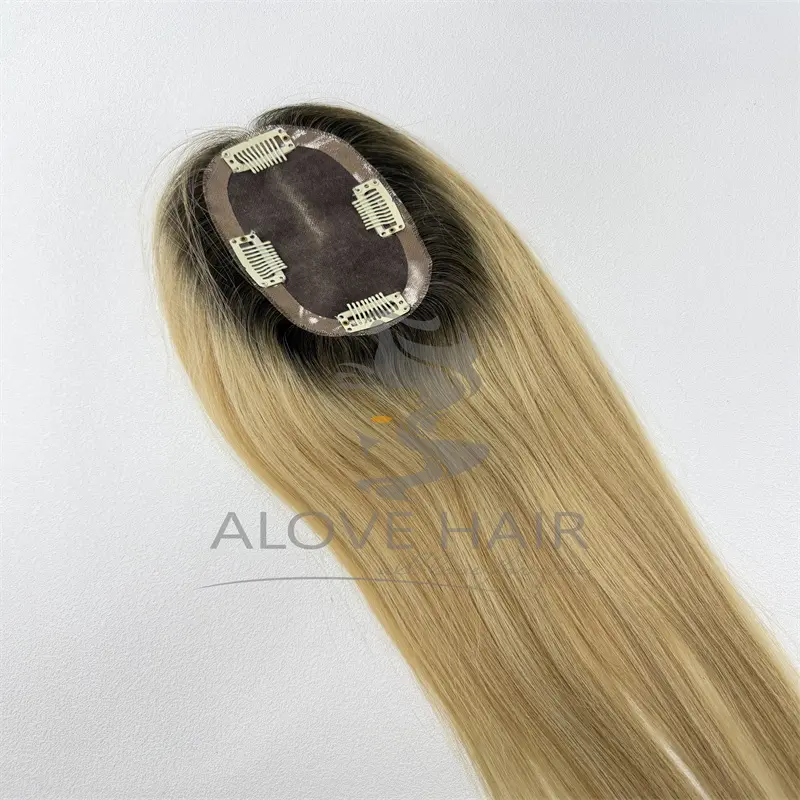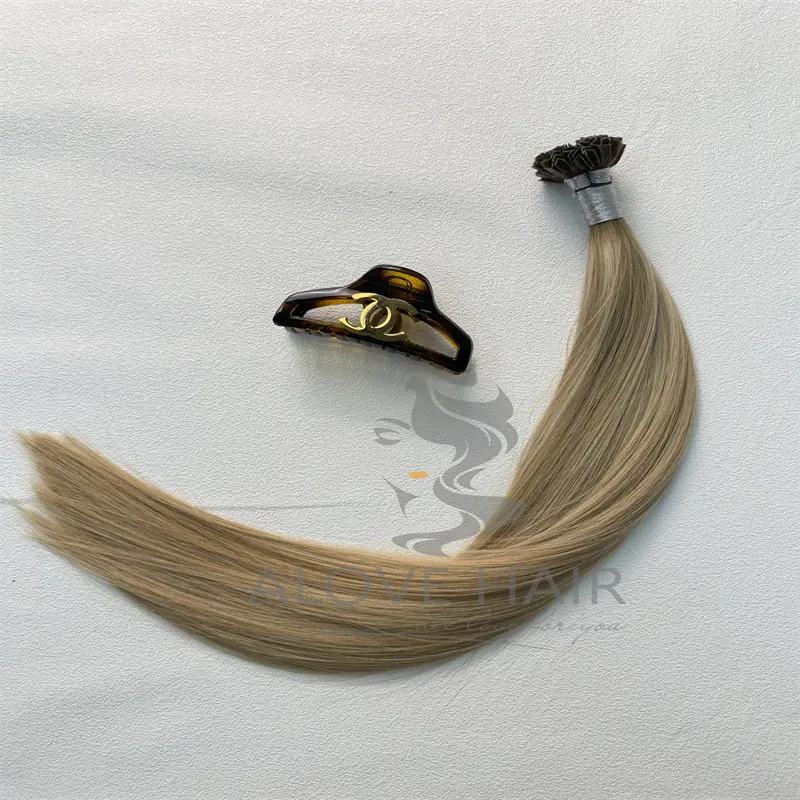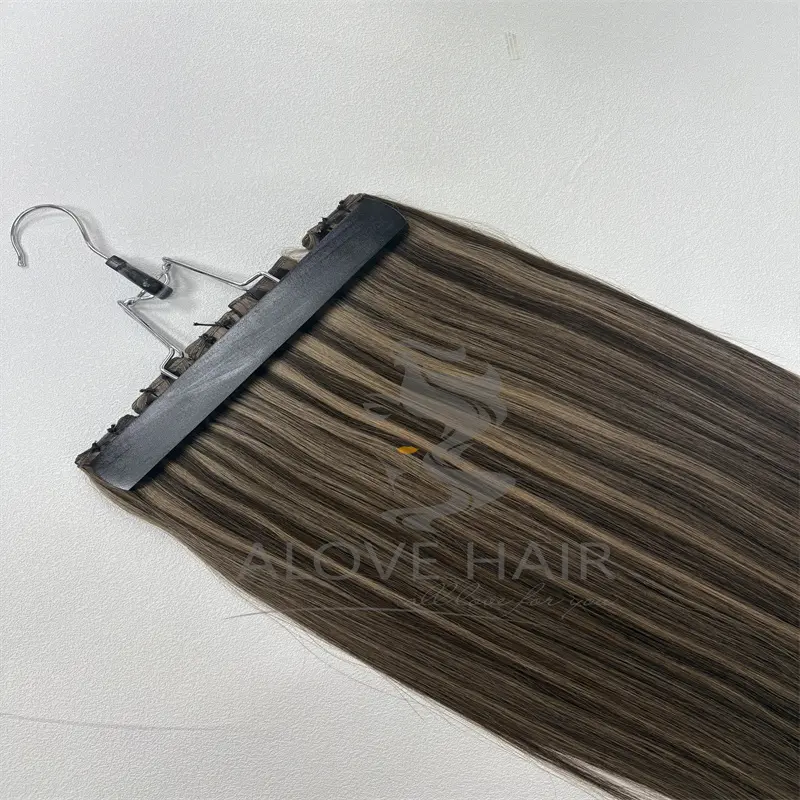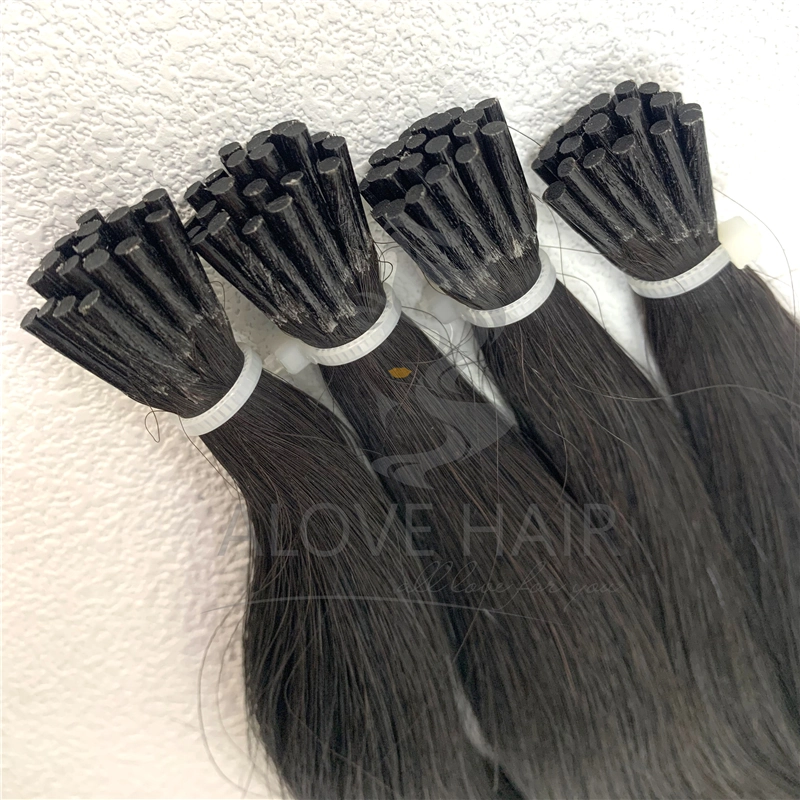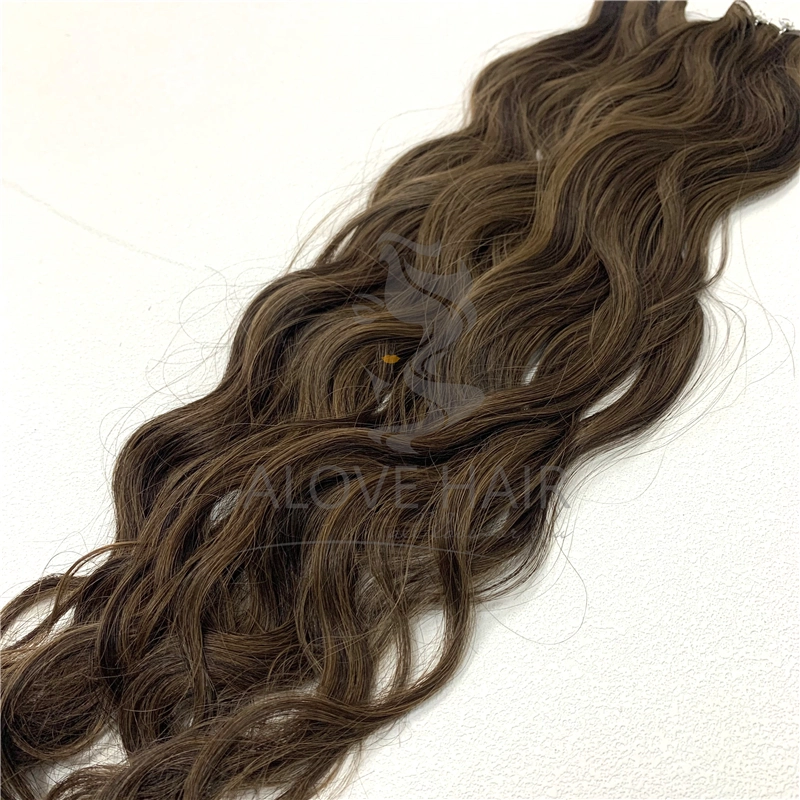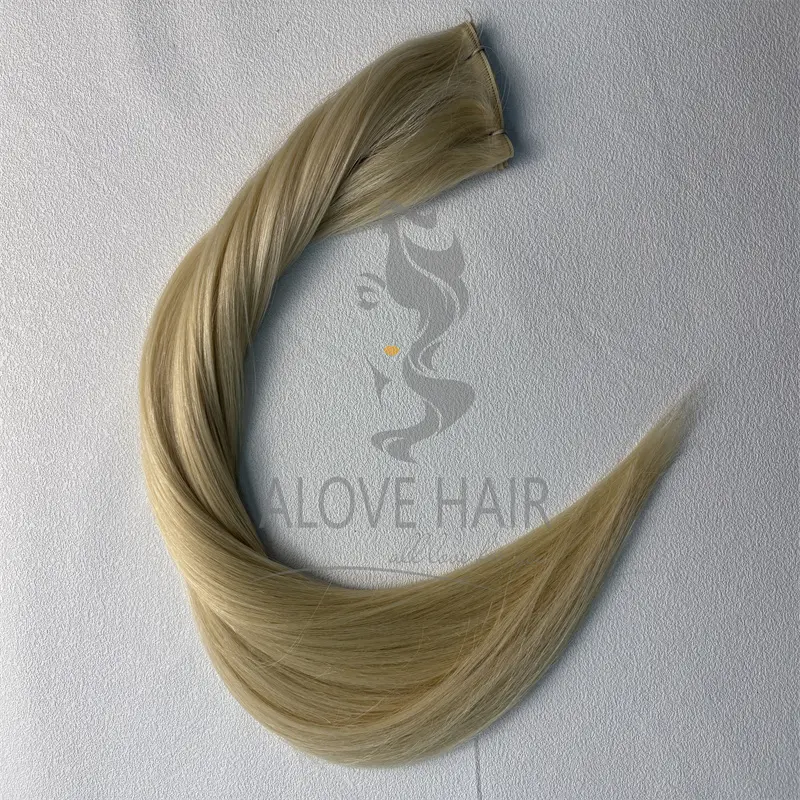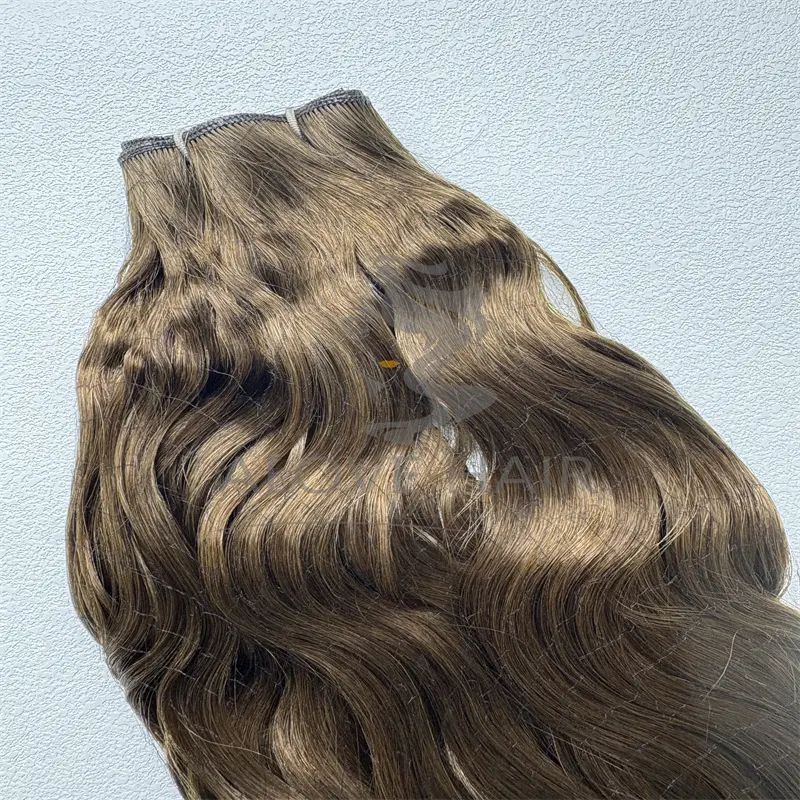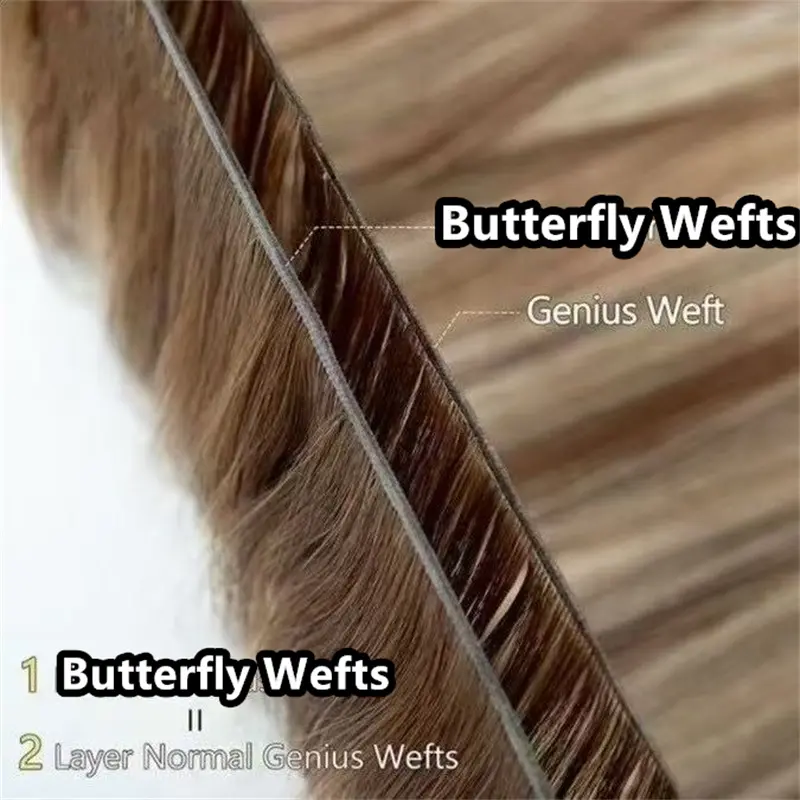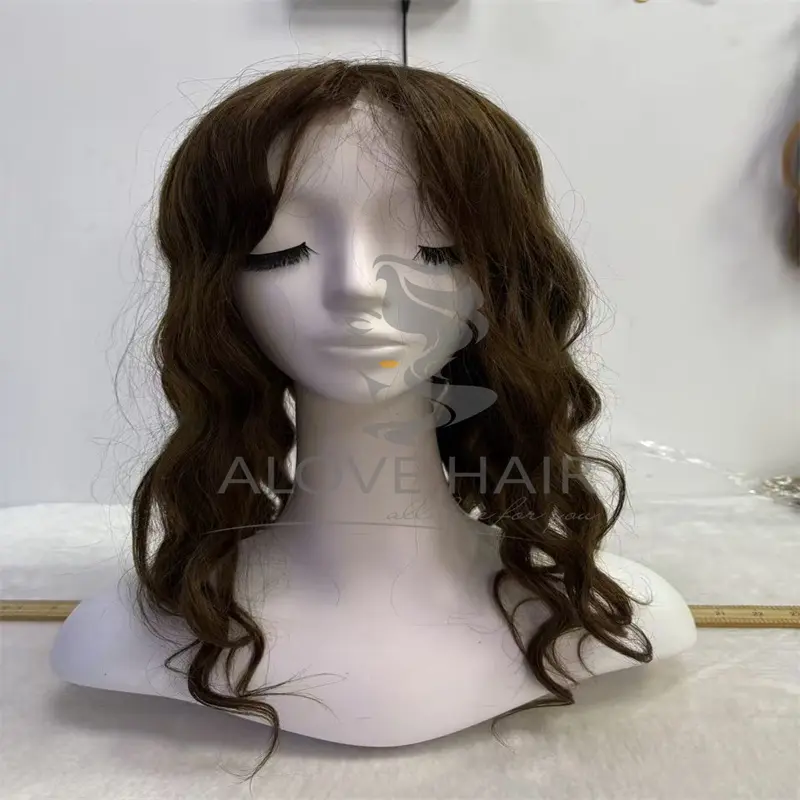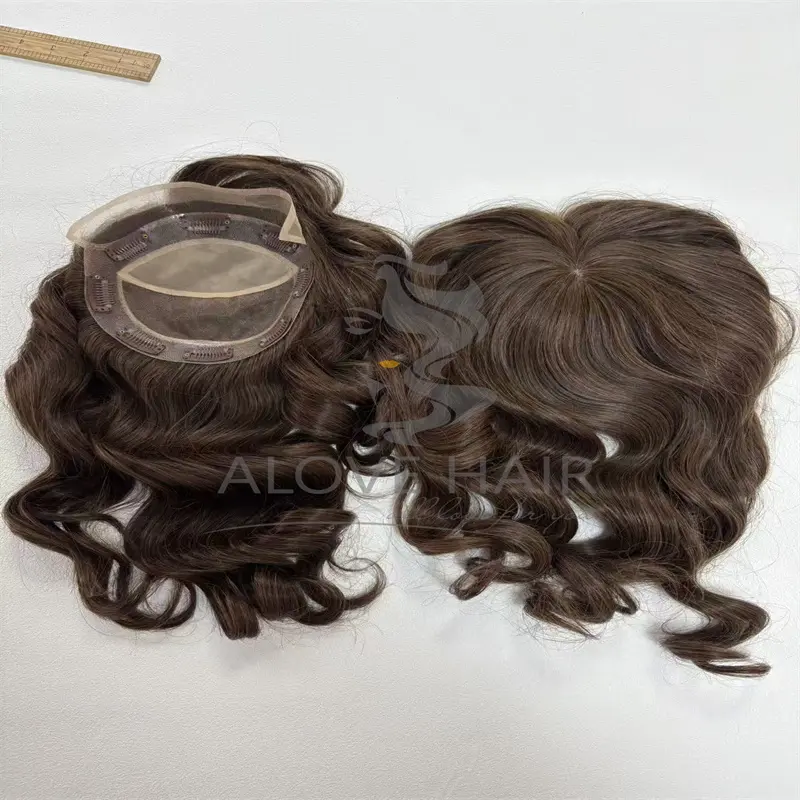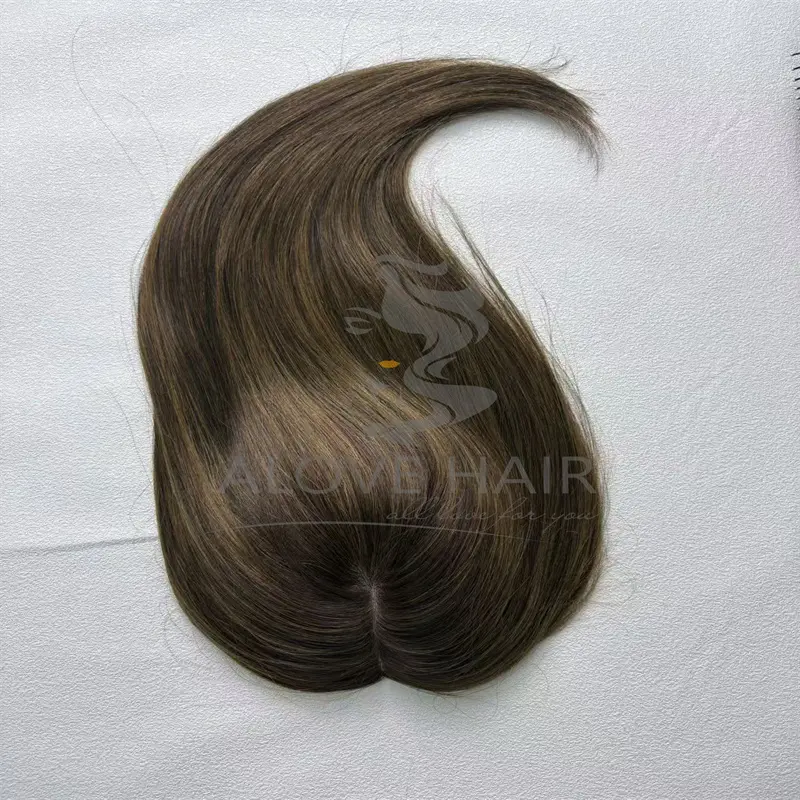In the world of hair enhancement, micro weft hair extensions have emerged as a game-changer for those seeking natural, lightweight, and damage-free volume. Unlike traditional hair extensions (e.g., thick wefts, glue-in extensions), micro wefts use ultra-fine hair strands woven into a 1–2mm-wide strip, mimicking the density and texture of natural hair. This article dives into their definition, pros and cons, and actionable purchase advice—backed by data—to help you decide if they’re right for you.
What Are Micro Weft Hair Extensions?
Micro weft hair extensions are thin, flexible strips of hair (either human or synthetic) created by weaving individual strands into a mesh-like base. The “micro” in their name refers to their narrow width (1–2mm), which is up to 5x thinner than traditional wefts (5–10mm). This design allows them to blend seamlessly with natural hair, making them nearly invisible when properly applied.
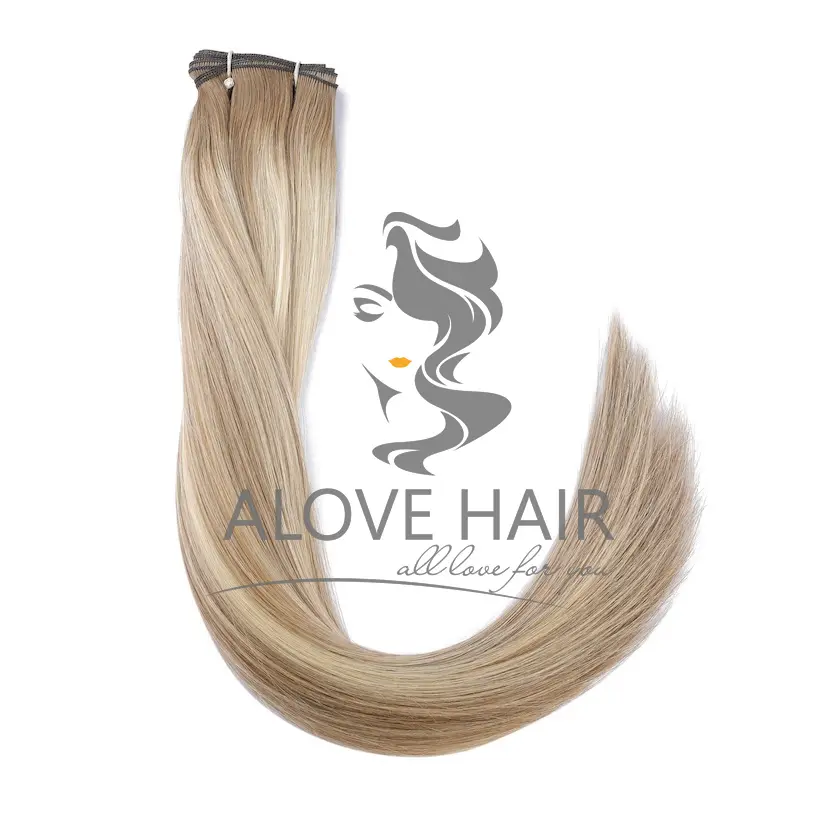
Key Features
Ultra-thin profile: 1–2mm width (vs. 5–10mm for traditional wefts).
Natural density: Mimics the look of natural hair growth (0.5–1mm between strands).
Versatile application: Can be sewn, taped, or glued to natural hair (no heat or harsh chemicals).
Material options: Human hair (100% Remy or virgin) or synthetic fibers (polyester, kanekalon).
Pros of Micro Weft Hair Extensions
1. Unmatched Naturalness
Micro wefts’ thin, woven design replicates the density and texture of natural hair better than any other extension type. According to a 2023 survey by Hair Extension Magazine, 82% of users rated micro wefts as “very natural,” compared to 58% for traditional wefts and 41% for glue-in extensions. Their narrow width (1–2mm) avoids the “chunky” look common with thicker wefts, making them ideal for front hairlines or subtle volume.
2. Minimal Damage to Natural Hair
Traditional extensions often require heavy adhesives (like glue) or heat tools (like flat irons) to attach, which can weaken hair follicles and cause breakage. Micro wefts, however, use gentle attachment methods:
Sewing: A stylist sews the weft to small sections of natural hair using a fine needle (no glue or heat).
Taping: A medical-grade adhesive tape (removable with warm water) bonds the weft to the scalp.
A 2022 study in the Journal of Cosmetic Dermatology found that micro wefts caused 60% less hair breakage than glue-in extensions over a 6-month period, as they avoid direct heat or chemical exposure.
3. Quick Installation & Removal
Compared to traditional extensions, which can take 4–8 hours to install, micro wefts are faster:
Sewn micro wefts: 2–3 hours (suitable for 50–100 strands).
Taped micro wefts: 1–2 hours (suitable for 30–50 strands).
Removal is also simpler—taped wefts peel off gently, while sewn wefts are cut from the hair without damaging follicles.
4. Reusable & Cost-Effective Long-Term
High-quality micro wefts (especially human hair) can be reused 3–5 times with proper care. For example, a set of 100-strand virgin Remy micro wefts (800–1,200) can last 12–18 months with regular maintenance, averaging 67–100/month. In contrast, single-use glue-in extensions cost 300–500 per application, totaling 12,000/year.
5. Versatile Styling Options
Micro wefts blend seamlessly with natural hair, allowing for:
Subtle volume: Add 10–20% more hair density without noticeable bulk.
Color matching: Dye the weft to match your natural hair color (human hair only).
Styling flexibility: Curl, straighten, or blow-dry the weft alongside natural hair.
Cons of Micro Weft Hair Extensions
1. Higher Upfront Cost
Micro wefts are pricier than most temporary extensions:
Human hair (virgin Remy): 8–15 per strand (100 strands = 800–1,500).
Synthetic fibers: 3–8 per strand (100 strands = 300–800).
This upfront cost can deter budget-conscious buyers, though long-term reuse offsets it.
2. Installation Requires Expertise
Poorly installed micro wefts can look unnatural or cause hair damage. A 2023 survey by The Beauty Institute found that 35% of users had “visible lines” or “uneven density” due to improper sewing or taping. To avoid this, choose a certified stylist with experience in micro wefts (look for reviews or portfolio samples).
3. Limited Suitability for Thin/Short Hair
Micro wefts rely on healthy, strong natural hair to anchor them. If your hair is:
Thinner than 0.05mm: The weft may slip or cause breakage.
Shorter than 4 inches: There’s not enough length to sew or tape the weft securely.
In such cases, consider alternatives like clip-in extensions or temporary sprays.
4. Maintenance Demands
Human hair micro wefts require regular care to maintain their look:
Washing: Use sulfate-free shampoo and avoid hot water (to prevent tangling).
Brushing: Use a wide-tooth comb to detangle (start from the ends).
Styling: Limit heat tools to 1–2 times/week (use heat protectant spray).
Neglecting these steps can lead to matting, frizz, or loss of shine.
5. Allergic Reactions to Adhesives
Taped micro wefts use medical-grade adhesives, but some users may react to ingredients like polyurethane or acrylic. Symptoms include itching, redness, or scalp irritation. Always do a patch test 24 hours before installation.
Purchase Advice: How to Choose the Right Micro Weft Extensions
1. Define Your Goals
Purpose: Subtle volume (daily wear) vs. dramatic length (special occasions).
Duration: Temporary (3–6 months) vs. semi-permanent (6–12 months).
2. Material Matters
Human hair (virgin Remy): Best for natural look and reusability (80% of users prefer this for daily wear).
Synthetic fibers: Cheaper and low-maintenance but less natural (ideal for short-term use or color experiments).
3. Check the Weft Width
Stick to 1–1.5mm widths for front hairlines; 1.5–2mm works for crown/occipital areas. Avoid wider wefts (>2mm), as they’re more visible.
4. Verify Quality Certifications
Look for:
Remy certification: Ensures cuticles are intact (reduces tangling).
Oeko-Tex Standard 100: Free from harmful chemicals (critical for sensitive scalps).
Brand reputation: Top brands like Great Lengths, EasiHair, or KeraCare have consistent quality.
5. Consult a Professional Stylist
A certified stylist can:
Assess your hair health (thickness, porosity, damage).
Recommend the right attachment method (sewn vs. taped).
Customize the weft to match your hair color and texture.
6. Factor in Maintenance Costs
Human hair: Budget 50–100/month for styling products and repairs.
Synthetic: 20–50/month (minimal repairs needed).
7. Read User Reviews
Check platforms like Trustpilot or Instagram for real-user feedback. Look for keywords like “natural look,” “easy to maintain,” or “no damage.”
Final Verdict: Are Micro Wefts Right for You?
Micro weft hair extensions are ideal for those seeking natural, lightweight volume with minimal damage. They excel in daily wear, special occasions, or gradual hair thickening but come with higher upfront costs and maintenance demands.
If you prioritize authenticity and long-term value, invest in high-quality human hair micro wefts from reputable brands. For temporary or budget-friendly options, synthetic micro wefts are a solid choice.
Regardless of your decision, always work with a skilled stylist and follow proper care guidelines to maximize your investment. With the right approach, micro wefts can transform your hair game—effortlessly.
